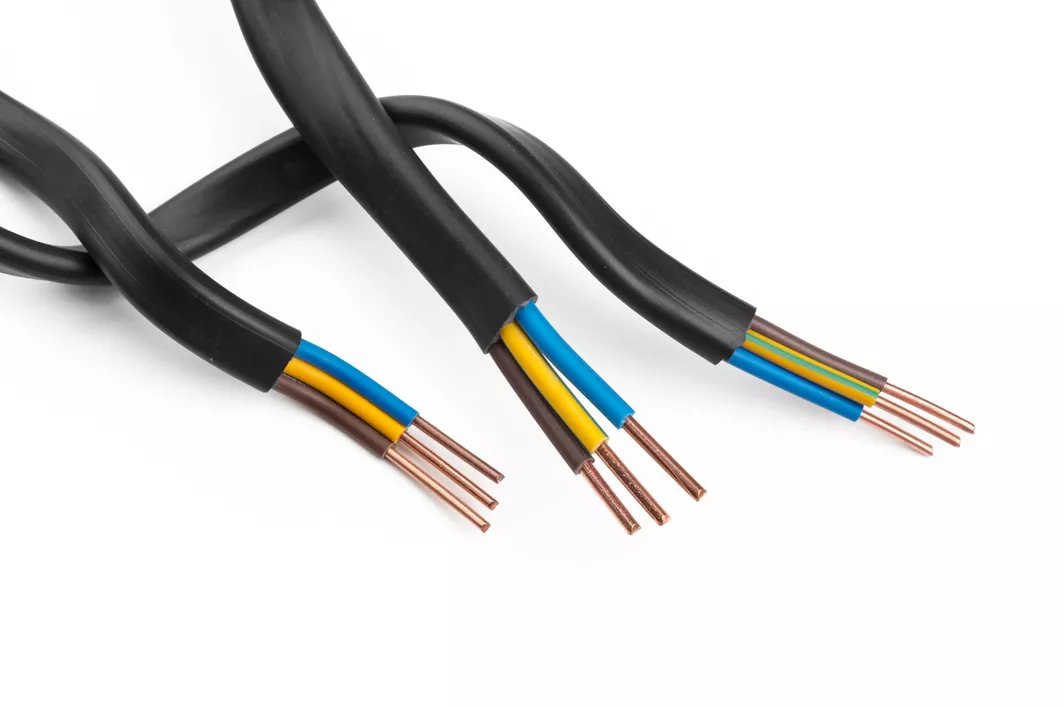Guide to Electrical Wiring Color Coding

Without an electrical system, you couldn't keep your food cold, wash your clothes, or flip on a light switch. Even though this system is essential to everyday life, its inner workings are a mystery to many homeowners. Assuming everything is running smoothly, there's no need to be an expert on your electrical panel. However, if something goes wrong, you want to be sure that you're at least somewhat familiar with the wires inside the breaker box and what they signify.
Every breaker box or service panel contains color-coded wires that supply power to your home's electrical outlets and appliances. The wiring throughout the breaker box must correspond to its respective amperage. For example, 12-gauge wire matches up with 15- to 20-amp breakers, while 8-gauge wire corresponds to 40- or 60-amp breakers.
To help you better understand the role of your electrical wiring, we'll take a closer look at the most common wire colors and what each one represents:
- Hot wires
- Neutral wires
- Common ground wires
We’ll also review why wiring is sometimes off-color or backward, and how to manage it.
Need help from professional, licensed electricians? Send for Jon Wayne!
Electrical work can be complicated at best and dangerous at worst. For your peace of mind, Jon Wayne’s licensed and highly-trained electricians are here to help! With fast response times and 200 trucks on the road, you can always depend on our electricians to provide timely, reliable service. In fact, our integrity, honesty, and convenience values have earned us thousands of 5-star reviews.
Hot Wires

Hot wires are the initial power feed to an electrical circuit. They are responsible for transferring the current from the original power source to the outlet. Because they always carry electricity, hot wires are considered the most dangerous wires to come into contact with. It's important to always be careful not to directly touch a hot wire, especially when an active power source is feeding it.
Hot wires can come in various colors, but the two most common electrical wire colors are red and black.
Red and black wires can both be used as switch legs in certain types of circuits. Unlike black wires, red wires are often used to connect hardwired smoke detectors to the main power source. These wires can also link different smoke detectors together so that they go off simultaneously when triggered.
Neutral Wires
The goal of neutral wires is to complete the circuit after hot wires have initiated it. Neutral wires transfer the current from the outlet back to the initial power source. This process helps stimulate better circulation throughout your electrical system. Neutral wires also prevent your electrical outlet from being overrun by faulty or excess currents.
Neutral wires are often characterized by their white color. In some cases, they might also be enclosed by gray casing. Even though there isn't always a live power source feeding a neutral wire, you should still be cautious when working with one.
Common Ground Wires

Unlike neutral or hot wires, common ground wires usually don't carry any current. However, in the event of a short circuit or another electrical fault, the ground wires transport the unstable current from your electrical system to the ground. This helps prevent the system from becoming overloaded. You can think of common ground wires as the primary defense against faulty or unstable electrical currents.
When identifying ground wires in your breaker box, there are three main colors to look for: green, yellow-green, and copper wire. These wires connect an outlet's grounding terminal to the electrical panel's grounding busbar. Green wires, in particular, can only connect to other green wires, so be aware of this when looking for common ground wires in your main breaker box.
3-Phase Wires
3-phase wires are designed to deliver more power than single-phase wires. Another key characteristic of 3-phase power is that it is much more efficient than single-phase AC power. Because they can carry higher volumes of current, 3-phase wires are typically used in large commercial or industrial buildings with heavy electrical needs. 3-phase power is accompanied by three main switches or three fuse cartridges. You can find these switches or cartridges inside your main breaker box.
Most 3-phase wires are black, red, or blue. Blue wires are often used for multiple switches controlling the same light in your home. As mentioned, red wires can be used as switch legs in circuits or to connect hardwired smoke detectors.
Off-Color or Backwards Wiring
If you notice discolored wiring in your breaker box, this could signify old age.
Electrical wiring often takes on a rusty or blackened color as time goes by. This can make determining which type of wire you're dealing with is difficult. If the wiring in your home's electrical panel doesn't match any of the colors discussed above, be sure to contact an electrician. Attempting to work with old, off-color wires can pose a major safety hazard, as there's no way of telling which ones are hot, neutral, or ground wires.
It's also crucial to watch for any backward wiring in your home. Wires not connected to the right outlets or power sources will fail to provide the electricity you need. If you come across any electrical wires that appear backward, this likely means they've been installed incorrectly. Be sure to contact a skilled electrician to rectify the issue immediately.
Need trustworthy electrical repairs or replacements? Send for Jon Wayne!
Our licensed and highly experienced electrical pros are committed to doing the job right the first time to avoid costly repeat visits. No matter what type of electrical work you need, our experts are always up to the task. Visit our electrical services page to learn more, or click below to request an appointment online today.

